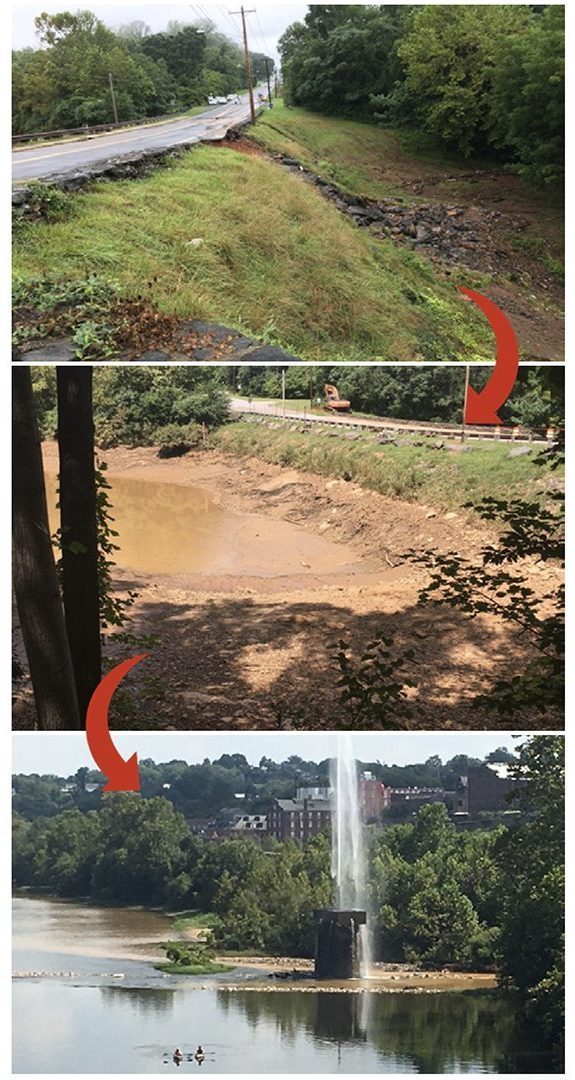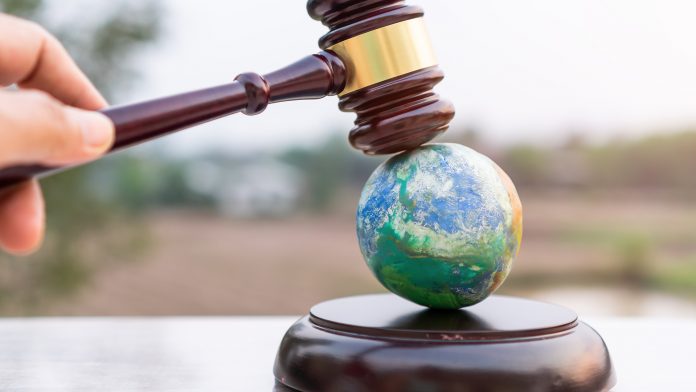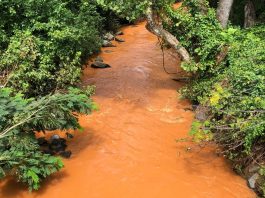Dr Thomas Shahady, Professor of Environmental Science at the University of Lynchburg, argues the case for the introduction of criminal law for environmental protection.
The importance people place on the environment and efforts to protect it takes on many forms. Regardless of the level of concern, the benefits of protection are enjoyed by everyone. But the business of protection is not.
Disparate actors from sectors of business, agriculture, or municipalities often exploit the environment for gain. The public, as the ultimate consumer of a clean environment, plays a minimal role in this exploitation.
Rather, protection is reserved for government and it is highly conflicted. With a need to please all sides, consider all stakeholders, exploit the environment for its own gain and political influence, it is often rather ineffective.
So, how is protection best accomplished? The never-ending regulatory and administrative law system supported by permits is very burdensome. If this system is working, this raises the question as to why our air, water and soil is continually at risk.
Clearly, contamination, flooding and climate change are getting worse. Many clamour for more and more restrictions but, within this system, it only burdens it further.
Local, national, and international law are written and continually strengthened but the performance of such laws is only assumed rather than tested. Actors within the system exclaim they are immune from fault because they have followed all environmental laws. We need to search the system and find alternative solutions to better protect the environment.
Some answers exist in the way business is conducted with regard to pollution. Regulation, compliance and even fines can be internalised and considered the cost of doing business. Therefore, only those with an ethic toward protection adhere to a satisfactory level of compliance, while others simply meet minimum requirements looking at regulations as burdensome and punitive toward their ultimate profit.
For agricultural sectors, working the land and water outweighs environmental concerns and, without a consuming public demand for more environmental controls, meeting demand is of greater priority.
Municipalities are often the worst offenders, using bureaucracies to obfuscate environmental protection duties. They heavily pollute from their waste and stormwater systems while manipulating law they are responsible to defend. Protection is lost due to minimalisation of regulations and government lack of ethics for protection.
All of this is possible because our administrative law systems do not adequately punish offenders. Fines or other administrative penalties are not enough of a deterrent. Criminal sanctions and the threat of prison would carry a much greater burden for compliance. Violations could not simply be an externality easily incorporated into balance sheets, but rather a necessity to keep operators in business. But how would such criminal sanctions be accomplished?
Environmental statutes often contain language that makes a conviction difficult and are rather complex to prosecute. Can we make the current system work by shifting from administrative penalties to the introduction of criminal law for environmental protection?
The permit system must change
We must first change the permit system. Permitting simply creates the legality of polluting. While permits carry various penalties for non-compliance, self-regulation and the ability to correct a discovered violation make wilful pollution a reality. Permits also have the problem of regulation only to a necessary end-point defined by the permit.
Generation of increased environmental protection, possible through minimal effort, is deemed unnecessary or foolish when the permit does not require it. As such, the permitting system creates levels of pollution deemed acceptable by reasonable use of a resource. This is the lynchpin of the Total Daily Maximum Load (TMDL) allocations embedded in the USEPA Clean Water Act. This outlines the allowable levels of pollution that maintain functionality of the resource within prescribed limits.

The fallacy of this approach lies in the condition of the resource from pollution impacts. Rivers continue to be burdened by excessive sediment loading during rain events worldwide due to this approach. Development or alterations occurring throughout a watershed and within the context of the law or appropriate permits directly cause violation during stormwater flow (Fig. 1). The disturbance of soil or development generating impervious surface does not violate law.
Natural processes that emit CO2 and methane do not violate law. Water and wastewater treatment occurs within applicable law. But the acceleration of processes in the environment, such as erosion, pollution-generated methane or eutrophication, result in violations. Precipitation generates sediment pollution and flooding, heating causes exacerbation of problems associated with climate change and inadequate water and wastewater treatment causing disease.
So how can violations of permits generate criminal violations? The answer lies in performance. Rather than a prescribed limit, those with permits should help to meet a standard of performance. Any permittee can proclaim they are operating within acceptable limits given by the permit, but verification that not only the built systems are operating correctly but are installed properly generates a different level of liability.
The introduction of criminal law should be held for those who design, approve and install environmental protection systems that inadequately perform. This would cause much improved safety margins of performance. This is why we are seeing flooding occur so often, as minimal safety margins have been incorporated into design. We must hold government to an even higher standard, both as the entity that approves the projects and one that must follow applicable laws appropriately.
States of emergency
Furthermore, when the problem reaches the level of an emergency, the law is nullified. During an emergency created by war, an Act of God or other national security threat, environmental laws become ineffective. Paradoxically, during such emergencies, the environment is in desperate need for protection.
War and national security threats are very often quite environmentally destructive. An Act of God is always environmental, such as a flood, fire or earthquake. It is understandable that a given national emergency should suspend certain laws to protect the governed, yet what is the trigger for such an emergency and how long should such orders remain? When does the environmental impact outweigh the threat the emergency is designed to protect? Where do checks and balances exist when the regulator exempts themselves?

These are difficult questions. While government as a permitting authority is a regulator of business and agricultural activity, it can become an egregious violator of environmental protection.
In 2018, a dam overtopping occurred next to our university, invoking a state of emergency declaration by the city (Fig. 2). Following this declaration, the lake behind the dam was drained and, for several months, water violating state water quality standards for bacteria (in excess of 1,000 cfu/100ml), nutrients (in excess of 0.1 mg/l) and sediment (in excess of 500 mg/L TSS) flowed from this structure.
Because the city was the owner and operator of the dam, the emergency declaration exempted them from water quality violations. The emergency declaration remained in effect, even though the structure was reopened to traffic (a road travels over the dam), evacuations returned and even new construction of houses commenced throughout the evacuated areas.
Oversight was not possible as the city operated under its own jurisdiction. Use of this statute was abused while environmental protection overlooked. Such statutory and administrative law was wholly inadequate to protect the environment. In this instance, rather than administrative laws, criminal laws for environmental protection would have been more appropriate. This was a complete violation of the Public Trust Doctrine.
The Public Trust Doctrine
The Public Trust Doctrine (PTD) is a covenant between the public (seen as the beneficiaries of a natural resource) and their government (the trustee of that resource). It is an essential doctrine driving environmental law and expectations. The government should operate in a way to manage the environment so that current and future generations shall benefit from that resource. At the heart of this doctrine is a trust that a government will always operate sustainably so that the public can be assured environmental resources are protected.
So, with this doctrine in place, why are environmental problems occurring? If all decision making and policy operates within the PTD, the environment and its beneficiaries (the public) should always prevail. But they do not. A dependence on administrative law operating at various levels of effectiveness does not fulfil the PTD. Failures are increasing and egregious pollution events seem to be increasing.
Any of these failures leads to fines, administrative penalties and then eventual strengthening of the law, but is this a fulfilment of PTD? At some stage, a tipping point is reached (think Sri Lanka and fertiliser) and economic problems now outweigh environmental. All the while, what is being eroded is the public trust. Economic burden with the potential of economic ruin with a loss of economic freedom is the ultimate violation of the public trust. The system is broken.
Further, when the government itself violates the public trust, who remains as the arbiter? How can the government regulate itself? How can the trustee enforce violations upon its own actions? Oversight and the courts do provide some relief, but both entities lack technical knowledge of environmental laws. States of emergency are subjective and left to the regulatory authority to determine when conditions are met and when it should be lifted.
For example, we have just recently declared an end to the COVID-19 state of emergency, regardless of the economic damage it has created. Public trust is too often abused and this plagues good environmental control. People, as the beneficiaries, must regain control.
Criminal law should be introduced for environmental protection
First, we must solve the problem of capture – what are the enforcement instruments for use and what are the costs for noncompliance or capture? And what are the mechanisms to assess the proper levels of environmental protection accurately? Consider current problems such as flooding and climate change. While precipitation patterns are changing, it is now an infrastructure problem. Is it even possible to capture those at fault?
Inadequate design and planning now put the public at risk both in property and wellbeing. Administrative law is completely ineffective – what are fines or penalties going to accomplish at this point? We need to assess what needs to be done and then hold those who will fix the problems to a strict level of adherence and stop any administrative law as guidance.
Instead, using criminal law for environmental protection would be completely based within performance. If my home is destroyed by a flood or my crops are damaged through extreme weather events or the government insistence on an endless emergency declaration damages my interests, then a responsible party will be held accountable. Multiple considerations for the use of criminal law for environmental protection can be applied. Knowing this up-front, the probability of being apprehended and prosecuted will be a strong driver for compliance. Performance and quality should instantly improve.
Criminal law carries a greater burden of defence and a much greater penalty upon conviction. Only those who can perform well will be in business. In short, criminal law for environmental protection would produce fewer convictions but much greater compliance because now the risk is much greater.
Even further, if you could link environmental crime with human victimisation (injury, death, or human rights violations) then a very strong case could be made in criminal court. The idea of ‘ethical extensionism’ would bring components of the environment (land, trees, wildlife and water) into this realm with moral standing. Victimisation would be extended to these entities allowing for criminal sanctions when they experience ‘harm’. We would not need to wait until a development project destroyed the water due to excessive run-off, but rather look directly at how the project worked within the landscape to see if harm is occurring during development.
While permits would still be granted, knowing violations including lack of performance of environmental controls would constitute a criminal violation. Developers would operate much more carefully with criminal sanctions rather than fines that simply increase the costs that can be recouped through various other means. For those who make emergency declarations or mismanage enforcement, direct criminal liability will be a check on power. This would cause a more thoughtful and meaningful regulatory environment and put the beneficiaries (the public) in greater control of the environment.
Thus, a move toward criminal rather than administrative law for environmental protection would give a much-needed boost to public trust. Environmental problems are real and increasing, so our solutions must provide needed results. It is time to consider alternatives before our current administrative system has completely eroded the public trust and leaves us with the problems completely void of any solutions.
Please note, this article will also appear in the fifteenth edition of our quarterly publication.





